So much is going on along the path from dirt to dinner that it’s almost impossible to keep up with all the newsworthy and significant developments on the farm. From domestic and foreign markets to changing food trends to exciting innovations food production, to policies and regulations affecting our food system, and more. So let’s take a quick look at the headlines catching our eyes recently.
Enough Already
More rains in key agricultural producing regions of the central United States continue to delay spring planting. As fields slowly dry out and recovery efforts continue for areas devastated by floods, the U.S. Department of Agriculture reports the corn crop is behind its normal planting progress, with 23 percent planted, trailing the five-year average of 46 percent. The soybean crop is behind by even more, now at 6 percent complete and behind the average of 14 percent. Spring wheat planting stands at about 22 percent, also below last year. Generally, with low spring plantings, markets might expect higher prices come harvest. But the outlook for U.S. Agricultural trade exports expected to remain the same from 2018, as a result, no one is so far predicting a major run-up in prices that would lead to higher consumer prices.
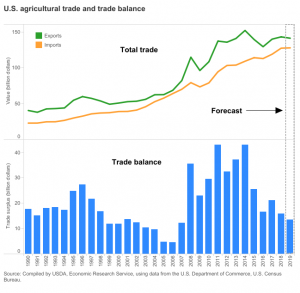
New Soybean Reality
And, to add to the rainy day, China will continue to affect the global soybean market. Not just because of U.S. tariffs but also because of African Swine Fever. The Chinese pig herd has dropped by 20% in the past 20 months. The USDA is predicting a global 42 million ton decline for China’s import demand. The sliver of a silver lining is that this will help U.S. pork exports to Singapore.
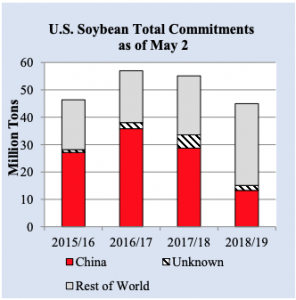
New Hope for Dairy Farmers
The plight facing U.S. dairy farmers has been well documented. Due to a global oversupply of milk and increasing consumption of almond and soy milk, dairy farmers are in their fifth year of low milk prices. Many are operating on a negative margin. The USDA is planning on helping the farmer by rolling out the Dairy Margin Coverage program which will send out $600 million in payments to milk producers.
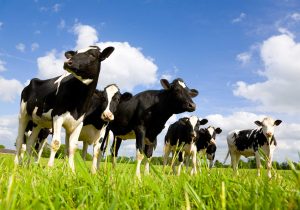
Survey Finds Glum Farm Investments
The economic uncertainty in the agricultural sector is doing more than reducing farm income. It’s also affecting farmers’ willingness to invest. The Ag Economy Barometer produced regularly by Purdue University and the CME Group this spring found that 78 percent of farmers surveyed felt it’s a “bad time” to make major investments in farm operations. Continuing tensions over trade with China and continuing weather problems in key producing areas are concerns for investing in technologies and equipment to increase productivity and profitability for farmers.
This also impacts food security for the people who depend upon them. The Barometer measures a monthly economic sentiment with 400 agricultural producers and a quarterly survey of 100 agriculture and agribusiness thought leaders. The latest survey showed the fourth largest one-month drop since data collection began in October 2015.

EU Acts to Spur Food Waste Reduction
The fight against food waste continues everywhere. The European Commission has adopted a common methodology for uniform measurement of food waste across all 28 member countries. This unified measurement system will allow improved reporting of efforts to cut food waste across the food chain. It also is expected to promote greater cooperation with food processors by food manufacturers and retailers, notably in promoting greater diversion of waste to bioenergy.
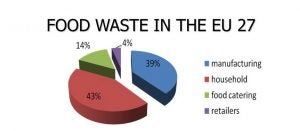
The total amount of food waste the EU 27 is estimated at 89 Mt. , i.e 179 kg/per capita/year. Households produce the largest fraction of EU food waste at 38 Mt or 76 kg per capita.
Some African Countries Think Again on GMOs
Kenya, Uganda, and Nigeria have recognized the benefit of GMO crops to help feed their people. Prolonged drought and widespread hunger have the Kenyan government looking more closely at food security and re-thinking its ban on genetically modified corn. With an estimated 1 million Kenyans facing hunger and malnutrition, government officials say they will make a decision in the next two months. Their decision could help open the door to wider use of the GMO seeds important to improving Kenyan food security. Uganda has moved ahead and pulled together a legal framework to approve GMO cassava, potatoes, cotton, and corn all of which are now resistant to insects requiring less insecticide and better yield. Their research has also developed a biofortified banana. Nigeria has commercialized Bt cotton and also approved the GMO pest resistant cowpea.
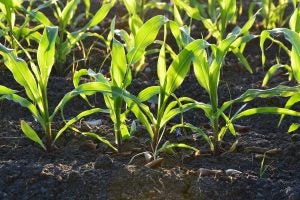
Danes Turn up the GMO Heat on EU
Denmark’s Ethics Council has added to the pressure on the European Union to rethink its opposition to GMOs. Much has changed since the 1990s, the Council observed, and policymakers must now think about how genetic technologies can help advance the development of the crops needed to contend with climate change, with greater resistance to pests and disease and more efficient use of water and nutrients. Until now, the Danes have been among the most vocal critics of GMOs, so the Council’s call for a new debate can’t be easily ignored by lawmakers and regulators.

Presidential Hopefuls Look to Change Ag policies
Sen. Elizabeth Warren (D-Mass.), Sen. Amy Klobuchar (D-Minn.), and Sen. Bernie Sanders (D-Vt.) are looking to get attention by making agricultural policy a key element of their campaigns. Warren and Sanders, for example, would attack economic concentration in agriculture, looking to break up large vertically integrated operations. Klobuchar, who helped write the 2018 Farm Bill, would boost all aspects of farming from dairy to animal disease outbreaks, to conservation. She also suggested a fee for mergers that would be used to investigate anti-competitive practices. As more and more attention shifts to the difficult economic environment facing farmers and rural America, expect the list of candidates with other provocative policy ideas for our farm and food system to expand still more.

The Bottom Line: Between new innovations in science, uncertain political environments, and simply the weather, we will continue to keep you abreast of these interesting times in food and agriculture.













